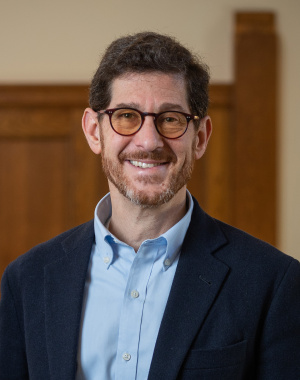
As college tuition and resulting student debt continue to rise, and college completion rates for underserved students have declined, Career Technical Education (CTE) is increasingly seen as offering alternative paths to economic security. While CTE does benefit students in important ways, relatively little is known about who can access the programs. In a new working paper, Ford School professor and Youth Policy Lab (YPL) co-director Brian Jacob and YPL project manager Jeremy Guardiola have examined CTE programs across Michigan, and find that disparities exist between economically disadvantaged, Black, and Hispanic students and their white counterparts. They add that better funding mechanisms can address that disparity.
Currently, school districts deliver CTE in three ways—local property taxes (millages), consortia, and independent operations. The authors found that in districts that had the CTE-designated millages, program availability is greater for all demographic groups and smaller socioeconomic and racial gaps in CTE access exist.
Students can participate in CTE programs at their own schools or at exterior facilities—other schools or independent training sites. Not surprisingly, schools with internal CTE offerings saw greater participation.
“On average, public high school students in Michigan have access to approximately 14 CTE programs overall. If we focus on programs that do not require travel, we find that the average student has access to 3 programs,” they write. However, they emphasize that “ these statewide numbers mask important variation by demographic characteristics. Our results indicate that access to CTE differs along racial, socioeconomic, and geographic lines.” Black students are roughly three times as likely as White and Asian students to have access to no CTE programs at all.
One way they examine the discrepancy is by looking at students who are eligible for free or reduced-price lunch as a proxy for socioeconomic disadvantage and found those students can access one less program in their own school and 2.4 fewer programs overall relative to students who are not eligible for this service.
The authors highlight the potential for CTE millages—local taxes that counties levy for the purpose of expanding CTE program availability and quality—to reduce disparities. Many counties use the proceeds from millages to create tech centers that offer a wide array of programs to students from all districts in the county.
In districts with millages, CTE participation among students of color is 40% higher and equal to that of White students in health science programs, for example. Economically disadvantaged students are more likely to participate in CTE health programs than their peers in districts with CTE millages.
“These results suggest that millages accomplish multiple policy goals that should satisfy stakeholders with various priorities: First, by increasing the amount of funds to support CTE programs, they allow districts to offer students a larger set of CTE choices; second, millages help ensure these opportunities are accessible to all students regardless of their race or socioeconomic background,” they write.
Two major barriers exist for school districts to push for CTE-specific millages. First, asking any locality for more taxes is always difficult. To make the case for those finds, the authors suggest that CTE administrators consult labor market projections for their part of the state and consider how they might use the funds to stand up programs that will prepare their students for the jobs of tomorrow.
Another limiting factor is the ability to hire qualified teachers. Michigan CTE instructors are required to demonstrate a record of 4,000 hours of industry experience in a related field within the last 10 years at the time of hire. Depending on the field, the difference in earning potential can make it challenging to hire qualified instructors. This can be especially challenging for rural districts that must recruit teachers to remote areas. They point to other states that have addressed these challenges and make it easier to recruit CTE teachers.
They conclude, “However districts choose to proceed, our work suggests that more students will readily participate in CTE if given the access and opportunity.”
You can read the entire study here: How Access to CTE Varies Across Michigan Schools and Students
